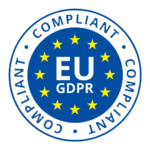Adopting an electronic Trial Master File (eTMF) is a key step towards more efficient, compliant clinical trials. But moving from paper to digital isn’t as simple as uploading files and forgetting about them. An eTMF is a living system, one that must be actively managed to ensure it delivers on its promise.
In this article, we explore some of the most common mistakes research teams make when using eTMFs, and how to avoid them.
More than just a digital archive
It’s easy to think of the eTMF as just a central folder for uploading documents, but in reality, it’s a regulated system that demands structure, traceability and consistency. One of the most frequent mistakes is treating it like a final destination for documents, rather than a tool for ongoing oversight.
To ensure compliance, documentation must be kept up to date throughout the trial, not uploaded in bulk at the end. Delays in filing increase the risk of missing documents, inconsistent naming, and lost audit trails.
Version confusion: a risk you can’t ignore
Accurate version control is essential in clinical trial documentation. Without it, you can’t prove which version of a document was approved or in effect at a given time, a critical point for inspections.
Many teams unintentionally overwrite files or fail to track updates properly. The result? An incomplete or unverifiable record that could jeopardise regulatory approval.
Choose an eTMF platform with built-in version history and clear audit logs. Make sure your team is trained to update, not overwrite.
Who has access and who shouldn’t?
Giving all team members full access to your eTMF might seem efficient, but it’s a common error that opens the door to accidental edits or deletions.
Instead, assign role-based permissions that reflect each user’s responsibilities. A good eTMF solution should support granular access control, so the right people have the right level of access and nothing more.
Integration blind spots
Your eTMF doesn’t exist in isolation. If it isn’t well integrated with your Clinical Trial Management System (CTMS) or site documentation workflows, you’re likely to encounter inconsistencies and gaps. These can lead to duplicated effort, missing documents just when an auditor comes calling.
Look for digital tools that offer seamless integration or shared data across platforms, so milestones, enrolment data and document updates stay aligned.
Xolomon: making research accessible
At Xolomon, we design eTMF solutions with usability and compliance in mind. From version control to secure access and integration with CTMS, our tools support real-time, audit-ready documentation without the complexity.
If your research team is ready to simplify operations and reduce risk, an eTMF may be the answer but only if you use it right.



